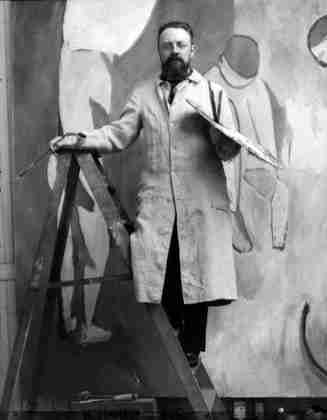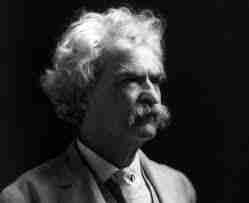If there is one thing about playing jazz that’s shrouded in mystery, it is improvisation. Improvisation exists in other types of music, even in musical traditions from the far reaches of the globe, but in jazz it goes much deeper. It is somehow vitally tied to the spirit of the music, and it’s not just musicians who recognize the power of the improvised solo. This essence has been captured in everything from literature to movies to pop culture.
There is something alluring about the idea of the jazz musician; a creative soul channeling the intangible through their instrument, essentially creating something out of nothing.
However, despite all of the attention, we still can’t seem to define this creative endeavor. You can get a degree in jazz studies, you can study the philosophy behind improvisation and creativity, and you can even scan the brains of improvising musicians to discover the secret pathways of the mind in its most creative state, but there still seem to be more questions than answers.
Alas, improvising continues to remain an elusive mystery.
As musicians hard at work developing this skill in the practice room, we often get lost in the music. It can be all too easy to lose the ability to look at the music objectively from an outside perspective and after some time, we’re no longer able to hear music with a naive untrained ear.
We become part of the music and suddenly we see the world in a different way. It’s true that we can’t go back and look at the music from an outsider’s vantage point, but the way improvisation is perceived affects the way we approach improving at improvisation and more importantly performing on stage.
Misconceptions about improvisation
The band takes the stage. A tune is quickly counted off. After a short melody, a soloists steps into the spotlight and up to the microphone, eyes closed in concentration, and begins to play the first notes of a solo. In the heat of the moment attention is focused, ears are opened, and technique is put to the test. But are those notes and lines coming from the soloist completely original? Is that improvised solo really improvised?
Well…it depends who you ask.
Anything goes
One widespread myth about improvisation is that it is completely made up on the spot. No preparation, no memorization, and nothing that isn’t completely original.
For many, especially those watching from a distance with little musical experience, this is the most logical explanation for improvisation. After all, how else do you explain those musicians playing without music?
However, as anyone whose tried their hand at soloing over a chord progression knows, jazz improvisation is not a completely random free-for-all. You can’t just play whatever you want and sound good. Yet, it’s not all predetermined either.
What musicians present on stage can be interpreted in many different ways by many different people. Take a quick look at this Stefon Harris TED talk:
From watching this video, you get the impression that any group of musicians can get together and just start playing, improvising without any preparation. What this uninitiated audience (in their business suits and name tags) is missing is the caliber of the musicians performing on that stage.
They’ll walk away from that presentation with the misguided idea that any group of musicians can just get up on stage and improvise like that. “There are no mistakes in jazz, it looked so simple when they just started improvising.” What they can’t see is all the preparation behind the scenes that led to that seemingly effortless ability, the “prerequisites” to achieve that kind of creative freedom.
Imagine the same presentation with a different set of musicians. Say that instead of that group of accomplished improvisers, Stefon Harris had picked some random players with proficient instrumental technique, but no ear training skills, no knowledge of form, and no study of the jazz tradition.
Would the result be the same? Would there be no mistakes on that bandstand?
Don’t think so.
For the player that isn’t using their ears, even the “right notes” can sound strangely unfamiliar and out of place. A lack of study, technique, or practice can destroy the creativity on any bandstand. On the other hand, an experienced improviser can make the “wrong notes” sound natural, even pleasing to the ear.
Played with musicality, knowledge, and openness to the spirit of the moment, there truly are no wrong notes, there are no mistakes.
It’s just music theory
Along with the view of complete freedom and risk is the opposing view of structure and intellectual knowledge. For this group, effortless improvisation can be achieved solely through scale practice and theoretical analysis. You often hear people say: ” If you want to improvise well, learn all your scales and arpeggios” and many take this advice to heart, spending hours in the practice room each day on scales and theory.
But the fact is that thousands of musicians know all their scales and arpeggios. They can play them in any key, in 3rds and 4ths and arpeggios, but how many are great improvisers?
In your practice, you can analyze solos on paper, you can look for voice leading and the 3rds and 7ths, and you can practice arpeggios for hours at a time, but if you stop with only this theoretical knowledge you are missing the point. This is the reason that the act of transcribing (listening and learning by ear) is just as important as the final result of transcribing, the names of the notes.
Armed with only theoretical knowledge and scales, improvisation will still remain just as elusive.
Yet, this is the mentality that is pervading the education of improvisation. If you know your scales, have the chord progression memorized, and know a few ii-V lines – then you’re improvising. It can be easy to forget that the act of improvising has many factors and that they all don’t involve music theory.
Enabling improvisation
Neither of the above theories for improvisation is entirely accurate. However, each explanation contains a piece of the puzzle in creating the environment for a great solo. The truth is that our goal is somewhere between these two poles, in the gray area. We’re not actually making up everything that we play spontaneously, yet we’re also not just rehashing lines we’ve memorized note for note.
One of the drawbacks of effective practice, is that it can become creatively stifling. Hours spent practicing the same line, the same technical exercise, or the same three chords. Over and over and over again until we don’t even have to think to produce these sounds. After some time it can feel as if we’re not improvising anymore, just inserting the same old techniques and concepts that we’ve drilled for weeks in the practice room.
The saxophonist Mark Turner talks about this struggle in this interview (check out the others as well on this page from the Stanford Jazz Workshop).
This type of practice can be repetitive, however it is necessary to attain that level of freedom that we desire on the bandstand. However, many of us do not put in enough work to get to this level of creative intuition. Even though we know better, we get sucked into the belief that improvisation is magic. Sure, we start out in the practice room studying and ingraining the pieces of a good improvised solo, but we rarely go far enough. We stop with a few scales, arpeggios, and memorized licks and we expect something magical to happen when we get on stage.
With this mindset, you’re more like the general public that knows nothing about music, a player just gets up there and creates great lines out of thin air.
“What matters most to me? To work with my model until I have it enough in me to be able to improvise, to let my hand run free…”~Henri Matisse
Improvisation is a curious endeavor. It’s both studious preparation and intuitive risk taking. You need each to set the stage for a successful solo. A solo that is planned out and memorized is boring and not in the spirit of the moment. And in the same vein, a solo that follows no rules, ignores the progression, form, harmony, time, and other players on stage, is just as unmusical and counter-intuitive to the spirit of the moment.
Improvising is like conversation
An apt analogy for the mindset of improvisation and the struggle between structure and memorization vs. spontaneity and freedom is that of an everyday conversation.
In any conversation there is a format that you follow, a “form” if you will. It is something that we all unconsciously learn through listening and imitation: a greeting, a response, a question, a response, another question and so on, back and forth. We don’t just start blurting out statements or inappropriate words, this destroys the moment and blocks communication.
For each of these parts of the form we have common phrases that we use for any number of situations. It all depends on the moment. We can ask questions, comment on an item of interest close at hand, or even crack a joke. With each statement we wait for a reaction and gauge our next direction.
There is no set script for any conversation, rather a common format that can lead in any number of directions. Some conversations stick closely to the phrases we know and are expected to use. Some can be incredibly boring where nothing creative or personal is shared, while others can go in directions we never expected and be incredibly fulfilling. It all depends on your intent, your feeling, your openness to interaction, and finally, the reaction of the other person.
It’s all about preparation and being in the moment
Just like a great conversationalist, an accomplished improviser is equal parts experience, practice, and creative inspiration. You must react and respond to the players and situations around you with your knowledge, ears, and practiced technique.
In performance the entirety of your musicianship is tested all at once. Every skill is connected and dependent upon the other for true creative freedom. Without technique, harmonic knowledge, and great ears you have a huge barrier blocking your creativity and communication with the other musicians on stage. And, without creativity, you’re left with music theory.
It’s practice and experience that allow spontaneity and create the right environment for improvisation. And, spontaneity transforms those scales, techniques, and hours spent transcribing solos into something greater than you could have possibly imagined.
“It usually takes more than three weeks to prepare a good impromptu speech.”~Mark Twain
The more you’ve learned, the more you’ve studied, the more experience you have soloing, the more you have to draw from when you improvise. You can take bigger chances and explore uncharted creative territories. Sure, you might play some lines or ideas that you’ve worked out in the practice room, but you are adapting them to the moment – the music happening right now.
In the end, this is the kind of improvising that really is improvising.












